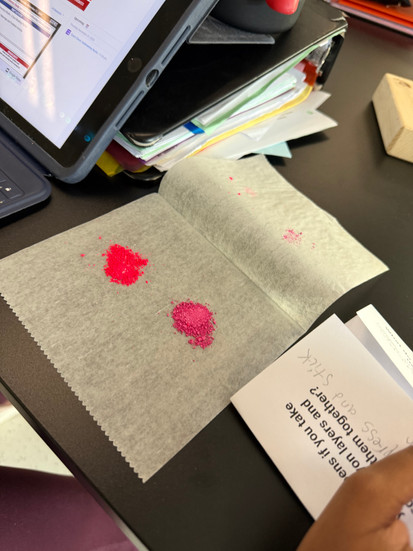Hey everyone,
Welcome to our latest science class update! We’ve been busy uncovering the fascinating story of Earth’s past, and I’m excited to share what we’ve accomplished and where we’re headed next. Read on to learn about our journey through Earth’s History, the exciting project we’re starting work on now, and what’s coming up in the weeks ahead (after winter break!).
Where We Were
Since Thanksgiving break, we’ve been diving into our Earth’s History unit. Students explored the structure of our planet and investigated different types of rocks, including how they form and change over time. This foundational knowledge has set the stage for understanding the broader story of Earth’s evolution and the processes that shape our world. Through engaging lessons, hands-on activities, and meaningful discussions, students have been building their understanding of the dynamic planet we call home.
Below are images from our Sedimentary Rock Activtiy, Weathering & Erosion Experiment, and Igneous Rock Demos (grayish wax representing extrusive igneous rocks and colorful speckly wax representing the intrusive igneous rocks):
Where We Are
We are wrapping up our Earth’s History unit with an exciting focus on the geologic time scale. Students are beginning their Geologic Time Travel project, where they will act as travel agents for a make-believe company called ChronoVacations. Their task is to research a specific time in geologic history, highlight key events, and relate these to the topics we’ve been learning about.
Students can create a poster, brochure, slide presentation, or radio commercial for their project. They’ll have three full class days to work on their projects, and on Thursday, the 19th, we’ll hold presentations. This weekend is an excellent opportunity for students to review their project packets and get a head start on research. Preparation will help them make the most of their class time, whether they work individually or with a partner.
Where We’re Going
After the Geologic Time Travel project, we’ll begin our next unit on Earth’s Processes. This unit will seamlessly connect with what we’ve learned in Earth History as we investigate plate tectonics, earthquakes, volcanoes, and other mass movements. These exciting topics will give students a deeper understanding of how Earth’s surface is shaped and reshaped over time.
If you have any questions or want to connect further, please don’t hesitate to contact me at curtis_silverwood@conestogavalley.org. You can also follow our journey on Instagram at @classwithcatwood, where I share updates and snapshots of our exciting classroom activities.
Thank you for your time,
Mr. Catwood (formerly Silverwood)
































































